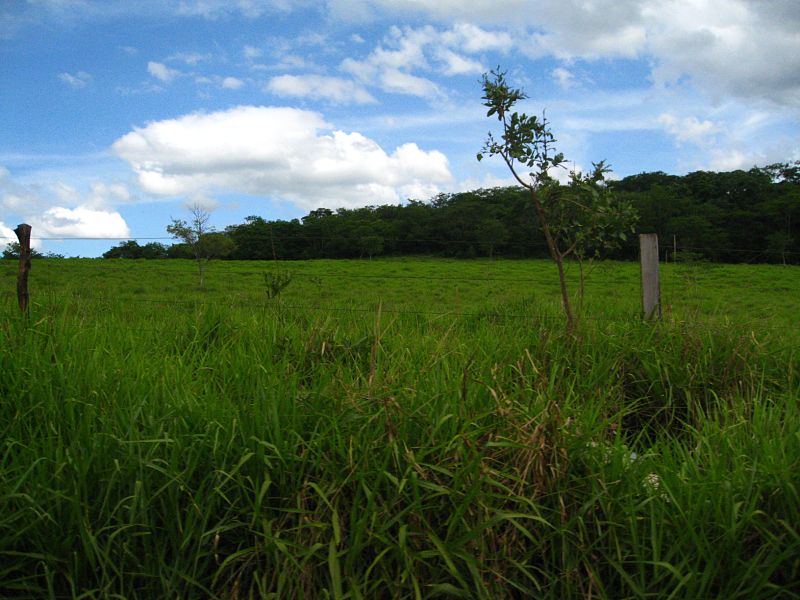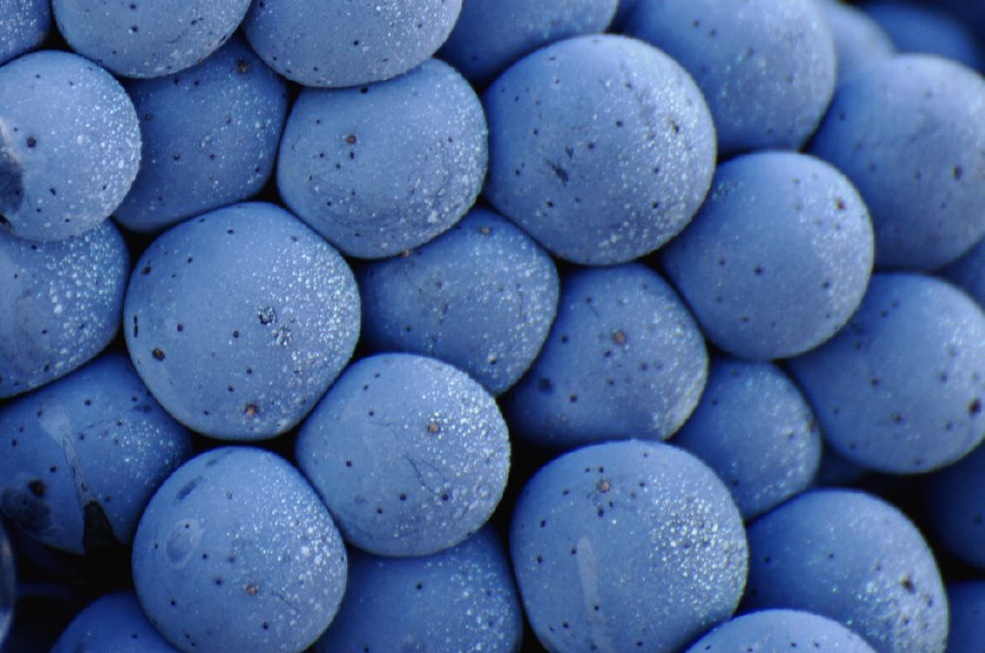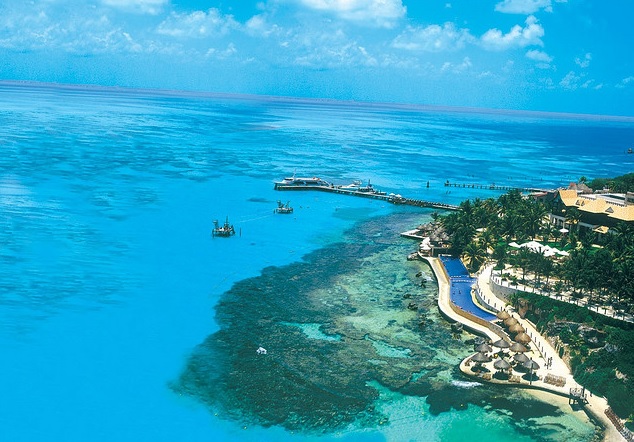Exploring climate change in a living laboratory in Chile
In Chile and around the world, the climate is changing and with it ecosystemic interactions. Continue reading Exploring climate change in a living laboratory in Chile
Science news out of Latin America
In Chile and around the world, the climate is changing and with it ecosystemic interactions. Continue reading Exploring climate change in a living laboratory in Chile
AMAZON More than 400 new species have been cataloged in the Amazon, says the World Wildlife Fund. ARGENTINA Argentine scientists have been studying whales off the coast of Patagonia for more than 30 years. Monitoring has been happening off the coast of the Península Valdés and 150,000 aerial images of 2,850 whales have been taken. Scientists at … Continue reading Monitoring whales in Argentina, gold mining and deforestation in Peru, and measuring biodiversity in the Amazon.
ARGENTINA Scientists in Argentina are studying the crab Chasmagnathus granulathus to study how memories are formed and altered in the brain. The researchers are studying the protein NF-kB which is implicated in forgetting–a process that is arguably just as important as remembering. Revista Anfibia’s photos are here. Argentine researchers are developing robots for incorporation into … Continue reading Argentine scientists study memory and forgetting in crabs, drug-trafficking in Bolivia’s Gran Chaco, and the state of science in Colombia.
Since 2006, Latin American students have been designing biological machines with specific missions: to remove nickel from contaminated drinking water in Colombia; to sense and respond to arsenic in Argentina; and to target and destroy cancer tumors in Mexico. These projects are university submissions to the International Genetically Engineered Machine competition, iGEM, started in … Continue reading Engineering life in Latin America
Chile harbors optimal conditions for scientific research: clear skies for exploring the cosmos, 4,000 km of diverse environments from the Atacama Desert to Antarctica. These “natural laboratories” attracted Charles Darwin and today they attract scientists from around the world. Next week, they will attract more than 200,000 students, teachers, scientists and the general public. … Continue reading Chile’s weeklong science party
ANTARCTICA An international team of scientists will study the melting of Antarctica’s Pine Island Glacier, which is currently melting at a rate of 6 centimeters per day. The team will measure glacier’s motion, map the bed of the glacier and explore the geology beneath the ice. ARGENTINA The National Institute of Agricultural Technology created a … Continue reading Using cassava to produce electricity in rural Colombia, teasing apart Chile’s salmon virus, and new coral discoveries in Latin America.
ANTARCTICA Brazil will rebuild the scientific base that burned down last year on King George Island in Antarctica. It will cover 4,500 square meters and include 17 laboratories for 64 people. ARGENTINA Researchers at the National University of Salta have developed low-cost solar water heaters for use by indigenous communities in the region. In addition, … Continue reading Engineering technology for health in Mexico, developing new food flours in the Dominican Republic, and biodiversity in Costa Rica
ANTARCTICA
A team of scientists has determined that a major cause of melting corresponds to the bottom of submerging ice shelves.

Researchers drilling to the bottom of Lake Hodgson of Antarctica have found microorganisms that date back 100,000 years. DNA studies will soon determine whether these findings are an unknown species.
ARGENTINA
A University of Mendoza study has demonstrated the neuroprotective effects of progesterone and their possible application as treatment for Parkinson’s disease. This research was commended by the Society of Biology of the Cuyo.
A team of researchers from the Universidad Nacional del Litoral has isolated bacteria from infant feces and breast milk for use in probiotics. The team’s intention is to grow up these microorganisms to commercial quantities so they can be incorporated into the daily glass of milk in low-income schools.
ARGENTINA
More and more Argentine scientists are following the lead of researchers that have used DNA to store texts, audios and pictures in sequences that were then inserted into bacteria. Scientists at the Universidad Argentina de la Empresa were able to store the first verses of the Argentine national anthem in a bacterium.

A transgenic orange plant was developed at the UBA that is resistant to citrus canker caused by the Xanthomonas bacteria. This plant bears a frog gene that confers antimicrobial properties.
CHILE
The 750 DECam megapixel camera, part of the Dark Energy Survey (DES ) and installed in the Victor M. Blanco telescope in Cerro Tololo, Chile will map one eighth of the sky to find out why there is accelerated expansion of our universe. The DES officially started August 31.
A Chilean-German diving project is forming with the aim of exploring Antarctic waters to document wildlife.
COLOMBIA
A Colombian physicist is part of
ARGENTINA
Scientists, patients and government entities in Argentina have reached an agreement to legislate stem cell therapies. The law “should address the scientific and therapeutic aspects of these cellular tools, always from a bioethical perspective, while guaranteeing the health protection of citizens,” stated Lino Brarañao, Argentina’s Minister of Science and Technology.

Recently, Argentina’s Ministry of Agriculture, Livestock and Fisheries passed a resolution for the evaluation of genetically modified crops like sugarcane and potatoes. This measure will allow two national institutions to progress in obtaining glyphosate tolerant sugarcase.
Argentine companies are working on breeding programs to increase protein levels in the soybean.
BOLIVIA
An international group of scientists led by Italian geographer Umberto Lombardo and Bolivian archaeologist José Capriles found in the Bolivian Amazon evidence of humans dating back 10,400 years. Their analysis concludes that hunter-gatherers settled there in the early Holocene. The work was published in the journal Plos One.
ANTARCTICA
Rising water temperatures will reduce the extent of krill habitat in Antarctica, say researchers.
ARGENTINA
A robot has been created by scientists in Mendoza for watering gardens. The system uses a similar technology to that used to detect movement in video games and moves around the garden on three wheels.

The Argentine Council for Information and Development of Biotechnology (ArgenBio) celebrates ten years of continuous broadcasting about biotechnology. Its educational program “Why Biotechnology” has trained more than 13,000 teachers across the country and worked with public and private entities in developing biotechnology in Argentina and Latin America.
BRAZIL
The Boticario Foundation for Nature Protection has launched a campaign aimed at the general public to raise awareness about the endangered jaguar (Panthera onca) which inhabits the Pantanal (a wetlands shared by Argentina, Brazil and Bolivia).
CARIBBEAN
80% of Caribbean coral reefs have been lost for many reasons, one being the attack of a bacterium that kills the coral. Eugene Rosenberg, a scientist at the University of Tel Aviv, identified phages that can control the bacterial attack and recover reef health. Continue reading “A bacterium hurting coral reefs in the Caribbean, a farmers strike in Colombia, and a tomb found in northern Peru.”
ANTARCTICA
The West Antarctic began to form approximately 22,000 years ago according to a study recently published in the journal Nature. They found, while analyzing a block of ice two miles deep, that a part of the white continent was formed long before the rest of the continent.

ARGENTINA
The South Atlantic, specifically the Gulf of San Jorge, will be studied jointly by Argentine and Canadian scientists, says the Ministry of Science and Technology of Argentina. The project will start in January 2014, will be done aboard the ship Coriolis II and require an investment of one million dollars.
For 10 years the Faculty of Agronomy at the UBA has been working with farmers in the municipality Daireaux, located 400 km from Buenos Aires. Through tax benefits, producers are encouraged to conserve soil and rotate crops in addition to adopting traditional farming practices in the area. The producers involved in the project have seen significant improvements in organic matter content and soil stability.
A group of scientists in Cordoba has created an innovative technology that allows people with physical disabilities to switch on the lights or lower the blinds in their homes through a system that decodes their brainwaves and transforms them into intelligible orders.
A new census of Andean condors taken near Chile’s capital of Santiago has tallied 300 birds. Started in 2011, researchers and volunteers have counted the soaring birds three times a year from six different observation stations on the mountains surrounding the city. They want to learn more about their country’s national bird—the Andean condor’s seven-foot wingspan and taste for carrion are some of the few things researchers know about these scavengers.

|
“Our numbers are preliminary but clearly valuable because 300 is higher than condor populations counted in other countries,” says Victor Escobar, an independent biologist working with the Chilean ornithology group R.O.C. which led the census. According to Escobar, Bolivia has counted 80 Andean condors (Vultur gryphus) in the Apolobamba range while 200 have been counted near Rio Negro in Argentine Patagonia. “Unfortunately, we don’t have numbers for the entire Andean range,” he says. “But that’s why we started this project.”
Researchers estimate there are around 10,000 Andean condors living throughout the Andes mountains — from northern Colombia to the tip of Patagonia. Though poaching has driven down numbers in Venezuela and Colombia, populations are generally thought to be stronger further south. Condor censuses are sporadic and generally local in nature.
Continue reading “Andean condor census in Chile finds 300 birds near Santiago”
ARGENTINA Argentina has created its first marine protected area south of the Falkland Islands. Seagulls continue to feast on Southern Right whales off Argentina’s Patagonian coast. One theory for the strange behavior is an overpopulation of gulls caused in part by the bustling tourism industry. CHILE A marine bacterium is being exploited for its antimicrobial … Continue reading Studying climate change in the Amazon, cattle feed poisoning fish in Mexico, and seagulls still attacking whales in Patagonia.
ARGENTINA Nine Argentine scientists have been honored by Argentina’s Ministry of Science and Technology. Among the recipients were the physicist James Grigera who studies condensed matter; Mariana Maccioni, an immunologist who works with proteins of the immune system; Mario Pecheny who studies research policy, sexuality and health; and Omar Azzaroni, a biochemist who investigates systems … Continue reading Argentina conducts genetic inventory of quinoa, new corals found in Chilean fjords, and Panama plants transgenic crops.
ARGENTINA Argentina’s Ministry of Science and Technology recently signed an agreement with the pharmaceutical company Sanofi to develop a program of primary prevention of type 2 diabetes, a disease with high prevalence in Argentina and Latin America but with few prevention efforts. The study will identify high-risk patients and incorporate nutrition education program and regular … Continue reading Combating diabetes in Argentina, Chile’s endangered Darwin’s frog, and measuring carbon sequestration in Mexico.
ARGENTINA Argentine researchers looking at the eating habits of Magellanic penguins discovered that each penguin can capture an astounding number of prey items per foraging trip. These include anchovy, hake, sardines, mackerel, octopus and squid in Argentine waters. Considering this level of consumption and the number of penguins that inhabit the Argentine coast (900,000 pairs), … Continue reading A bird of prey faces extinction in Central America, the voracious Magellanic penguins of Patagonia, and a new electric car in Chile.